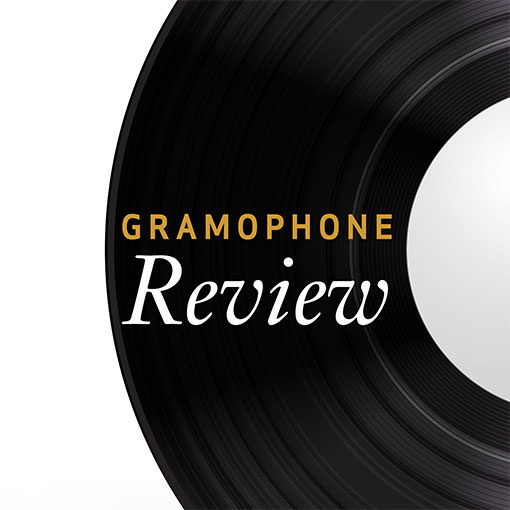Royer Harpsichord Works
View record and artist detailsRecord and Artist Details
Composer or Director: Joseph-Nicolas-Pancrace Royer
Label: L'Oiseau-Lyre
Magazine Review Date: 9/1993
Media Format: CD or Download
Media Runtime: 59
Mastering:
DDD
Catalogue Number: 436 127-2OH

Tracks:
| Composition | Artist Credit |
|---|---|
| Pièces de clavecin |
Joseph-Nicolas-Pancrace Royer, Composer
Christophe Rousset, Harpsichord Joseph-Nicolas-Pancrace Royer, Composer |
| (La) Chasse de Zaïde |
Joseph-Nicolas-Pancrace Royer, Composer
Christophe Rousset, Harpsichord Joseph-Nicolas-Pancrace Royer, Composer |
Author: Nicholas Anderson
It is now some 12 years since William Christie made an excellent disc of Pancrace Royer's only published collection of harpsichord pieces (1746); and it was reissued recently on CD. Royer was a more prominent figure in French musical life than the comparative unfamiliarity of his name nowadays would suggest. He was an imaginative director of the Concert Spirituel, leader for several years of the Opera orchestra, and a successful composer for the stage, as well. His ballet-heroique, Zaide (1739) was especially popular and was still being performed in the 1760s. La Chasse de Zaide is the composer's own harpsichord arrangement of a ''symphonie'' in the opera and, in this new recital, Christophe Rousset appends it to the pieces of the 1746 publication. That, too, incidently contains a number of transcriptions by the composer of pieces from earlier stage works.
Anyone familiar with Rousset'sGramophone Award-winning performances of Rameau's harpsichord pieces (L'Oiseau-Lyre, 12/91) will be expecting great things from this Royer disc. They will not be disappointed, for it is, in every respect, an outstanding recital. This is not to say, however that Royer's music is on a level with that of his illustrious older contemporary but it is anything but dull or predictable, and it sometimes recalls Rameau's idiom, especially in the more delicately wrought pieces such as the wistful ''La Zaide'' which hints at the other's ''Les Tendres Plaintes''. Here, and in several other instances, too, Rousset favours brisker tempos than Christie. It is, perhaps the Royer of ''La Zaide'', ''La Sensible''—a rondeau in C minor of sustained melancholy—and ''Les tendres sentiments'' which makes the strongest appeal to my sensibilities. But the other side of the coin, so to speak, is no less diverting. Royer could be quite an adventurous harmonist—another quality which he shared with Rameau—and he proves this in a wild piece, ''Le Vertigo'', full of extravagant gestures and excitement generated by vigorously repeated chordal passages, tirades, rhythmic interruptions and so forth. Indeed, its distinctly improvisatory character foreshadows C. P. E. Bach. Rousset responds to these extremes of temperament with passion on the one hand and sensibility on the other.
The beautifully recorded, fine sounding harpsichord is a 1751 instrument by the Parisian maker, Hemsch. It may once have belonged to Rameau's patron La Poupliniere and is the selfsame harpsichord on which Rousset recorded Rameau's Pieces de clavecin of 1724 and 1728. Since both Rousset and Christie turn in comparably effective performances of Royer's harpsichord pieces choosing between them may be difficult. I like Christie's more spacious, more melancholy ''La Sensible'', for instance, but prefer Rousset's more demonstrative ''Le Vertigo''. Christie is bolder in his ornaments (''La Zaide''), while Rousset observes a stricter code of practice. Rousset favours a tuning which approaches equal temperament while Christie's meaner tone, if I can so put it has a delicious tang evoking a picture of a somewhat untended instrument echoing through the windows of an old French manoir of an evening in late summer. The choice is yours—but neither is likely to disappoint. A warm welcome to the newcomer.'
Anyone familiar with Rousset's
The beautifully recorded, fine sounding harpsichord is a 1751 instrument by the Parisian maker, Hemsch. It may once have belonged to Rameau's patron La Poupliniere and is the selfsame harpsichord on which Rousset recorded Rameau's Pieces de clavecin of 1724 and 1728. Since both Rousset and Christie turn in comparably effective performances of Royer's harpsichord pieces choosing between them may be difficult. I like Christie's more spacious, more melancholy ''La Sensible'', for instance, but prefer Rousset's more demonstrative ''Le Vertigo''. Christie is bolder in his ornaments (''La Zaide''), while Rousset observes a stricter code of practice. Rousset favours a tuning which approaches equal temperament while Christie's meaner tone, if I can so put it has a delicious tang evoking a picture of a somewhat untended instrument echoing through the windows of an old French manoir of an evening in late summer. The choice is yours—but neither is likely to disappoint. A warm welcome to the newcomer.'
Discover the world's largest classical music catalogue with Presto Music.

Gramophone Digital Club
- Digital Edition
- Digital Archive
- Reviews Database
- Full website access
From £8.75 / month
Subscribe
Gramophone Full Club
- Print Edition
- Digital Edition
- Digital Archive
- Reviews Database
- Full website access
From £11.00 / month
Subscribe
If you are a library, university or other organisation that would be interested in an institutional subscription to Gramophone please click here for further information.





